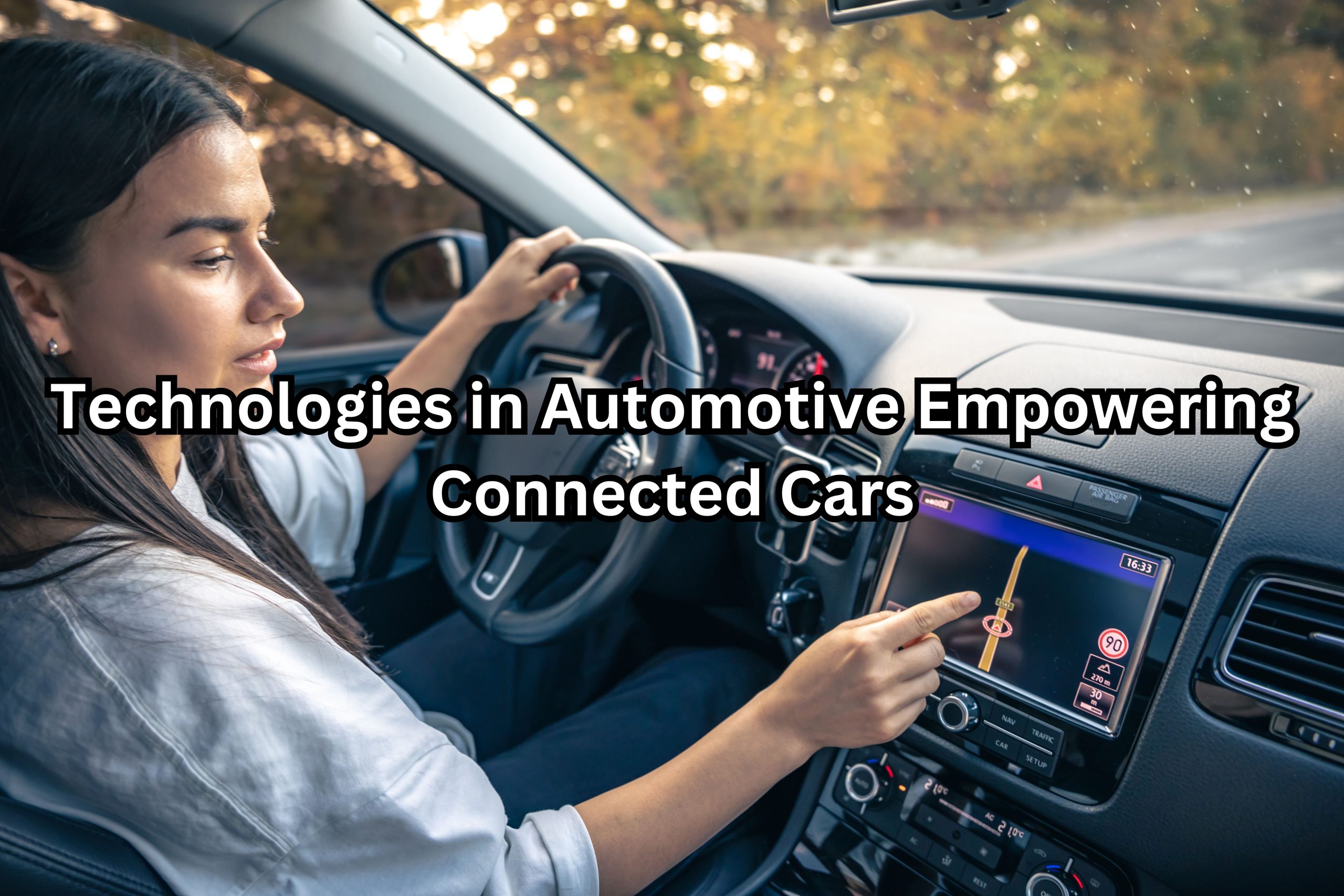While flying cars might still be a dream on the horizon, we’ve unlocked the magic of self-driving vehicles! The core tech powering this bold vision is automotive IoT. In this post, prepare to dive headlong into the dynamic industry of Automotive IoT, which has built a brilliantly connected driving experience. Forget everything you thought you knew about cars; this journey explores a landscape where technology meets intuition, revolutionizing the way we travel.
The fusion of automotive engineering with the Internet of Things (IoT) has experienced a staggering ascent in recent times. According to recent statistics by M&M, the global automotive IoT market is slated to soar to a remarkable $322 billion by 2025. The usage of IoT in vehicles showcases a robust compound annual growth rate (CAGR) of 19.7% from 2023 to 2028. This meteoric rise reflects the deepening integration of IoT technologies within automobiles, ushering in an era of unparalleled connectivity and functionality.
Technologies in Automotive that Empower Connected Cars
1. Everything Starts with IoT
At the heart of connected cars lies IoT technology. Sensors and devices embedded within vehicles collect real-time data, transforming our cars into data hubs. This data facilitates predictive maintenance, enhances safety, and provides a personalized driving experience.
2. 5G & DSRC to Answer the Connectivity Issues
When you think of a connected car, imagine streaming high-definition video, receiving live traffic updates as well as sending vehicle data to the cloud—all in real time. This demands fast, reliable, and low-latency connectivity. 5G, the fifth generation of wireless technology, along with Dedicated Short-Range Communications (DSRC), provides the answer. These technologies deliver lightning-fast internet speeds and near-instantaneous communication, making sure your connected car can perform its tasks seamlessly.
3. Do You Think AI Is Only About Self-Driving Cars?
Artificial Intelligence (AI) in automotive extends beyond self-driving cars. AI algorithms for IoT in vehicles analyze vast datasets to optimize traffic flow, predict maintenance requirements, and enhance energy efficiency. From adaptive cruise control to intelligent route planning, AI is transforming the way we drive.
5. There Would Be No AI Without Big Data and Machine Learning
AI in connected cars relies heavily on two fundamental technologies: big data and machine learning. The connected vehicles in IoT generate vast amounts of data daily—information about your driving habits, vehicle diagnostics, navigation routes, and more. Big data platforms aggregate and process this information. Machine learning algorithms then sift through this data, learning patterns and providing valuable insights. This results in predictive maintenance, personalized recommendations, and improved vehicle performance, all while ensuring your safety.
6. Blockchain Can Help Protect Volumes of Driving Data
With the proliferation of data, ensuring its security and integrity is paramount. Blockchain technology for Automotive IoT provides a secure, tamper-proof ledger for storing driving data. This decentralized approach not only enhances data security but also facilitates transparent, trustworthy transactions within the automotive ecosystem.
7. We’re Not Going Anywhere Without Telematics
Telematics, a blend of telecommunications and informatics, plays a crucial role in connected cars. It enables remote diagnostics, vehicle tracking, and fleet management. Telematics devices capture real-time information, enabling timely interventions and creating a safer, more efficient driving environment.
8. Cloud Platforms: We’ll Be Driving Tech, Not Just Vehicles
Cloud platforms are the backbone of connected car services and Automotive IoT. After storing and processing data in the cloud, automotive manufacturers can offer seamless software updates. This significantly improves real-time navigation and personalized in-car experiences. Cloud integration ensures that our vehicles are not just machines but evolving technological entities.
Future Automobile Technologies We Can Expect in Our Cars
1. Augmented Reality Dashboards
Imagine driving with real-time, context-specific information displayed on your windshield. Augmented Reality Dashboards will overlay essential data, such as navigation cues and speed limits, directly onto your field of view, enhancing situational awareness.
2. Biometric Vehicle Access
Bid farewell to conventional keys. Future cars will recognize their owners through biometric authentication, ensuring secure and effortless access. Facial recognition and fingerprint sensors will replace traditional key fobs, enhancing security and convenience.
3. Holographic Displays
Conventional infotainment systems will make way for holographic displays. Passengers will enjoy immersive, 3D visuals projected into the cabin, transforming mundane journeys into captivating experiences.
4. Predictive Maintenance
Leveraging AI and IoT, future cars will predict maintenance requirements before issues arise. After analyzing real-time data, vehicles will schedule maintenance appointments automatically, ensuring optimal performance and minimizing downtime.
5. Vehicle-to-Everything (V2X) Communication
Expanding on V2V and V2I communication, V2X will enable vehicles to communicate with everything – pedestrians, cyclists, and even roadside infrastructure. This interconnectedness will enhance safety and traffic efficiency, paving the way for smarter cities.
Conclusion
The era of connected cars powered by Automotive IoT is upon us, promising a future where our vehicles are not just means of transportation but intelligent, interactive companions. From IoT sensors to AI algorithms, these technologies are reshaping the automotive landscape, enhancing safety, efficiency, and user experiences.
As we look ahead, the fusion of technology and mobility will continue to drive innovation, transforming our cars into smart, connected entities that empower and enrich our lives. Hold onto your seatbelts because the future of driving is here, and it’s thrilling than ever before!
